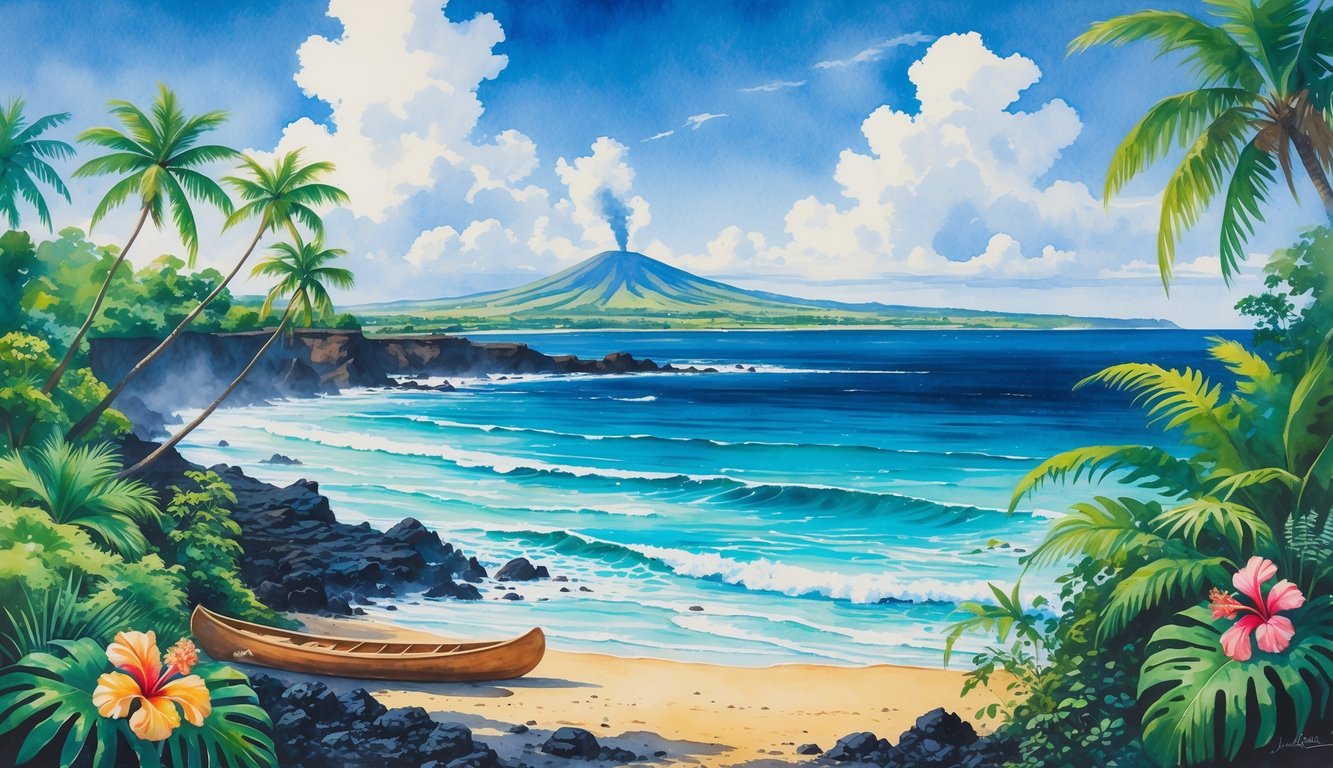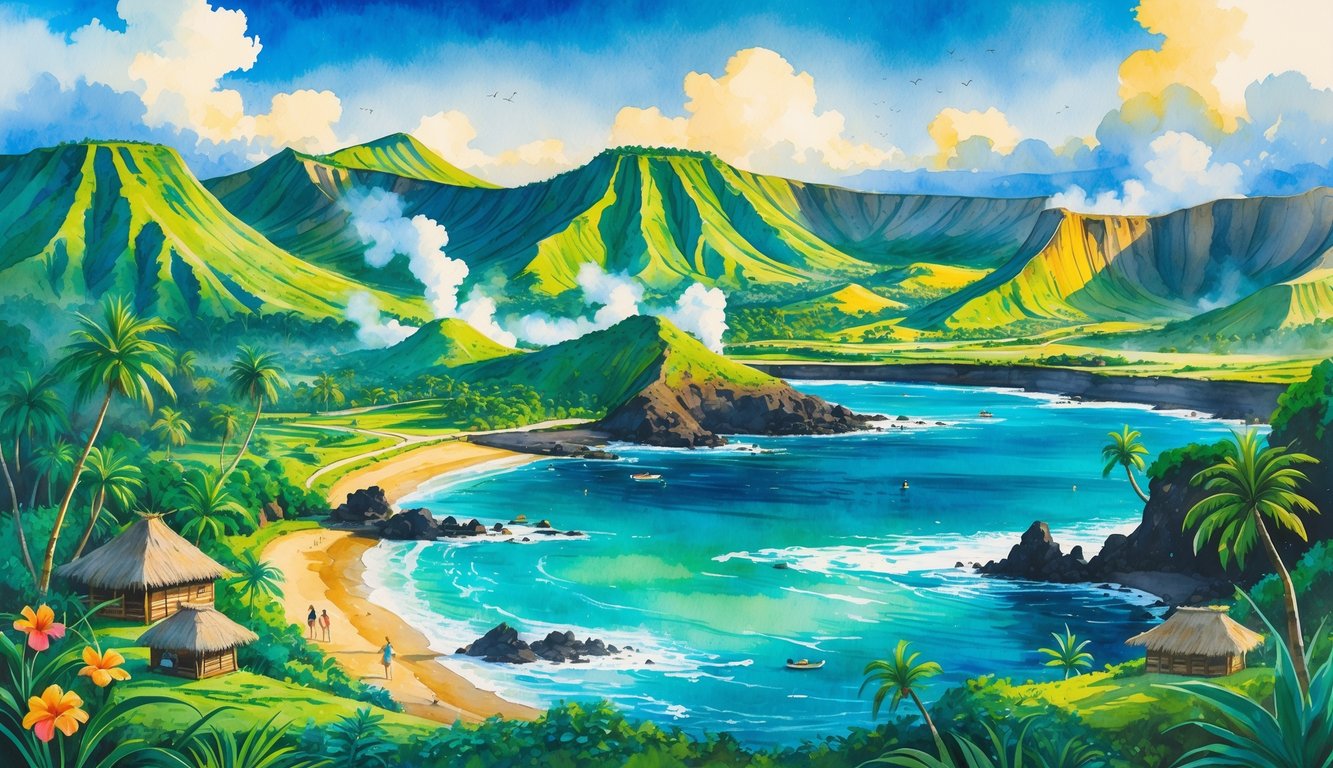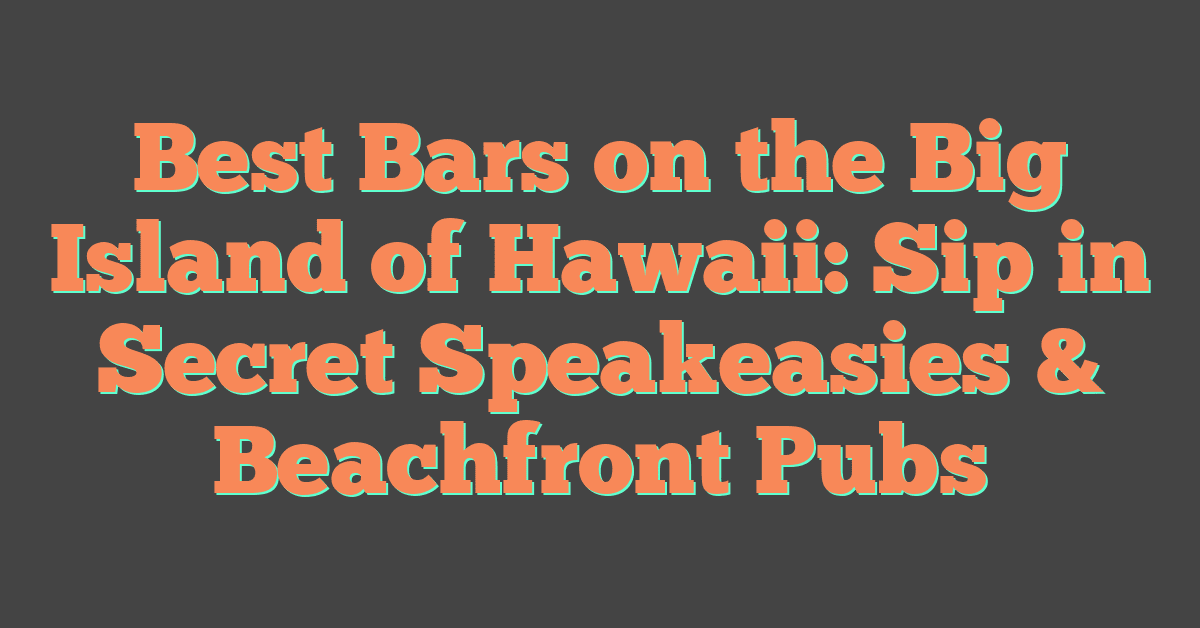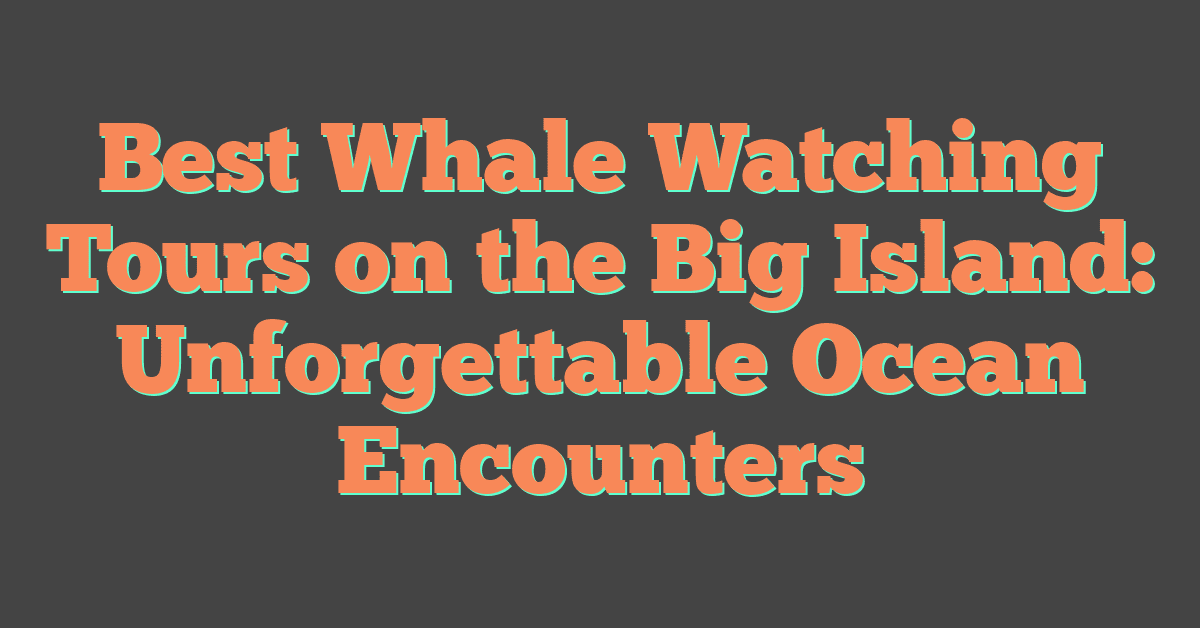The Big Island of Hawaii offers more variety than any other in the Hawaiian Islands. From black sand beaches and active volcanoes to lush valleys and coffee farms, every day can feel different.

Spend a week here by balancing time between its sunny west coast, rugged east side, and the unique landscapes in between.

In seven days, you can explore Hawaii Volcanoes National Park, swim with manta rays off Kona, and wander through Hilo’s waterfalls and botanical gardens. Taste fresh island-grown coffee, learn about Hawaiian history, and relax on beaches with golden, white, or even green sand.
This guide provides an easy-to-follow plan that blends outdoor adventure with cultural experiences and local flavors. With the right itinerary, you can see the Big Island’s highlights without feeling rushed, and still have time for surprises.
Essential Big Island Itinerary Overview

The Big Island features distinct regions with unique activities, from sunny beaches to lush rainforests and active volcanoes. Choose the right base, plan your time efficiently, and learn how to get between destinations to make the most of your trip.
How to Plan Your Week
A balanced Big Island itinerary often splits time between the Kona side and the Hilo side. Kona has sunny weather, beaches, and snorkeling. Hilo is closer to waterfalls, rainforests, and Hawai‘i Volcanoes National Park.
Group activities by region to reduce long drives. For example, explore the Kona Coast, Kohala, and Waimea on the west side before moving to Hilo for Puna and Volcanoes National Park.
Include rest days or half-days in your plan. The island is large—about the size of Connecticut—so daily schedules should account for travel time.
A sample plan:
- Days 1–3: Kona Coast, Kohala, Waimea
- Days 4–5: Hilo, Puna, Volcanoes National Park
- Days 6–7: Ka‘ū, South Point, relaxation or water activities
Where to Stay: Kona, Hilo, and Beyond
Kailua-Kona on the west side is the most popular base. It offers many hotels, vacation rentals, and easy access to beaches, snorkeling spots, and Hawaiian food restaurants.
This area gets plenty of sunshine, making it ideal for outdoor activities. Hilo on the east side has a quieter, more local feel.
Hilo sits close to waterfalls like Akaka Falls, lush gardens, and the entrance to Volcanoes National Park. Lodging here ranges from small inns to budget hotels.
Other options include Kohala resorts for luxury stays, Waimea for cooler mountain air, and Puna for a rural, off-the-beaten-path experience. Ka‘ū has limited lodging but sits near the island’s southernmost points.
Getting Around the Island
You need a rental car to explore the Big Island. Public transportation is limited and does not reach many attractions.
The main roads form a loop around the island. Driving from Kailua-Kona to Hilo via the north coast takes about 2.5–3 hours without stops.
The southern route through Ka‘ū takes longer but passes scenic spots like Punalu‘u Black Sand Beach. Gas stations are more frequent on the Kona and Hilo sides, but can be sparse in rural areas like Puna and Ka‘ū.
Plan fuel stops in advance. For flexibility, rent a car for the full week instead of relying on tours or shuttles.
Top Natural Wonders and Outdoor Adventures
The Big Island has active volcanoes, lush valleys, dramatic waterfalls, and some of the clearest waters in Hawaii. You can hike through lava fields, swim alongside tropical fish, and watch the night sky from one of the world’s best stargazing spots.
Exploring Hawaii Volcanoes National Park
Hawaii Volcanoes National Park features Kilauea Crater and the Halemaʻumaʻu Crater, where you can often see volcanic steam rising from deep within the earth.
Drive along the Chain of Craters Road to see old lava flows, the Pu’u Loa Petroglyphs, and the striking Hōlei Sea Arch. Short trails lead to steam vents and panoramic viewpoints along the rim.
Walk through the Thurston Lava Tube, a cooled lava tunnel surrounded by dense rainforest. Some travelers stay at the historic Volcano House, which overlooks the crater.
Nearby, you can visit the Volcano Winery for tastings of local wines and teas.
Waterfalls and Rainforests
Northeast of Hilo, ʻAkaka Falls State Park has a paved loop trail through lush vegetation to a 442-foot waterfall. The park also includes the smaller but scenic Kahuna Falls.
Closer to town, you can easily reach Rainbow Falls, which is best viewed in the morning when sunlight may create a rainbow in the mist.
Drive along the Hāmākua Heritage Corridor to see dramatic sea cliffs, gardens, and access points to Waipiʻo Valley. This valley features taro fields, a black sand beach, and steep walls covered in greenery.
Farther north, hike to Pololū Valley for a quiet black sand beach with sweeping coastal views. Explore Kaumana Caves, formed by lava flows, for a cool underground adventure if you have flashlights and sturdy shoes.
Beaches and Snorkeling Hotspots
On the Kona side, Kealakekua Bay ranks among the island’s top snorkeling spots. It offers clear water, coral reefs, and frequent visits from spinner dolphins.
Kayaks and guided boat tours help you reach the best areas. Kua Bay and Makalawena Beach have soft white sand and turquoise water, great for swimming on calm days.
Makalawena requires a short hike, which keeps the crowds smaller. Near South Point, the rare Green Sand Beach has olive-colored sand created by a nearby cinder cone.
The hike to the beach is about 2.5 miles each way, so bring water and sun protection.
Mauna Kea and Stargazing
Mauna Kea rises nearly 14,000 feet above sea level, with cooler temperatures and sweeping views. Many visitors stop at the Visitor Information Station at 9,200 feet to acclimate before heading higher.
The summit hosts world-class observatories and some of the clearest skies on Earth. Evening stargazing programs at the visitor center provide telescopes and guided sessions.
Watch sunset views from near the summit, with clouds often forming below. Bring warm clothing, as temperatures can drop below freezing even in summer.
If you have a four-wheel drive, you can make the trip to the top. Guided tours are also available for those who prefer not to drive.
Cultural Experiences and Local Flavors
Explore working coffee farms, historic sites tied to Hawaiian royalty, and taste fresh island foods at open-air markets. These activities offer insight into the island’s traditions, agriculture, and daily life.
Kona Coffee Farms and Tours
The Big Island’s Kona region is famous for its smooth, rich coffee. Many farms welcome guests for guided visits that show how beans are grown, harvested, and roasted.
At places like the Heavenly Hawaiian Coffee Farm, you can stroll through rows of coffee trees and watch the roasting process up close. A coffee farm tour often includes tastings of different roasts so you can compare flavors.
You might also stop by the Kona Brewing Company to sample locally made craft beers.
Historic Sites and Hawaiian History
Historic landmarks help you connect with the island’s past. The Painted Church features colorful biblical murals, showing how early missionaries blended art with faith.
Nearby, Pu’uhonua o Honaunau National Historical Park preserves a place of refuge used in ancient Hawaiian law. Walk its grounds to see temples, fishponds, and carved wooden figures.
The Captain Cook Monument marks the site where the British explorer died in 1779. Learn about King Kamehameha I, the leader who unified the Hawaiian Islands.
Farmers Markets and Local Treats
Island farmers markets let you taste fresh produce and handmade foods. The Hilo Farmers Market ranks among the largest, with vendors selling tropical fruits, baked goods, and flowers.
Many stalls serve ready-to-eat snacks, such as poke bowls and banana bread. Sweet treats like Kula Shave Ice are popular on warm afternoons.
Travelers can bring market finds to Coconut Island, a small park near Hilo. The park has grassy areas and calm swimming spots.
You can enjoy fresh fruit, ocean views, and a shady tree for a simple island lunch.
Some markets sell locally made crafts. Visitors can take home a piece of the Big Island’s culture.




